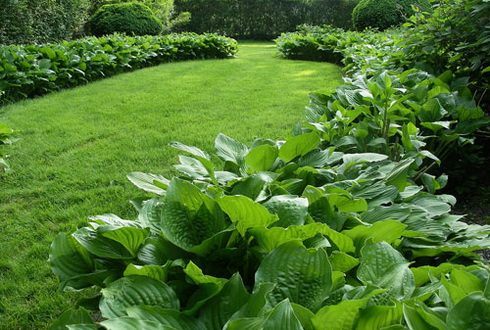|

Except botanical descriptions of plants in the special literature (the agricultural technician, flowering terms, the native land, grades) in our opinion not enough attention is given to the shape of a plant, its architecture and variability during season. But without this the work of a landscape architect is complicated and frequently contains obvious errors, but they are not obvious at once. If we are talking about own garden where we can change compositions infinitely, but about an order, these errors can be always corrected. Certainly, such characteristics of plants are individual enough from the point of view of the author. We would like to share with you our many years experience in area of creation of decorative gardens and to try to give to dry encyclopedic descriptions of plants an art shade, to see a plant not only as a biological kind, but also as an architectural form with all merits and demerits. We begin these short reviews with Grass perennials as with the most changeable group (except trees and bushes).
In our collection today is more than 500 only biological kinds (except grades), BUT experience shows that it is possible to allocate a group of 50 kinds: with one prominent feature - decorative effect during all season. They are beautiful before flowering, perfectly well hold the form, «do not collapse". They can be used both in combinations, and in strip landings. If they are planted without any obvious landscape errors do they will never lose. Their weakness is early spring when the plant intensively grows, but also at this time some of them, for example young ferns give a unique picture. Throughout all season, up to approach of the first frosts, grass perennials will look it great in your garden. Many of these plants either are undeserved forgotten or have not received sufficient distribution yet. We specially don’t talk about botanical description and agricultural technician because special literature is rich with these details.
Aruncus the Ordinary. Aruncus Vulgaris.
Very powerful plant, perfectly well holding its bush, in height up to 2 meters.
Continue of the article: Aruncus the Ordinary. Aruncus Vulgaris.
Ligularia dentata
Very dense bush with leaves of various colour (from light green with the return lilac part to is dark-purple - grades Desdemona, Othello).
Continue of the article: Ligularia dentata
Petasites amplus. (Butterbur)
Imagine the leaves of coltsfoot to 80 cm in a diameter, forming a dense bush in height up to 1,5 meters, not losing its shape during the hole season.
Continue of the article: Petasites amplus. (Butterbur)
Pursh wormwood. Artemisia purschfan.
From a series of silver plants. Well and densely grows on a shining sun, in a penumbra extends and lays down.
Continue of the article: Pursh wormwood. Artemisia purschfan.
Woolly woundwort
Continues the series of silver plants. Can be added to middle height cover ground group.
Continue of the article: Woolly woundwort
Multicoloured spurge. Euphorbia polychrome
And here is the plant that is beautiful when blossoming, but also it is not less fine after. Gives very dense spherical bush in height up to 50 sm.
Continue of the article: Multicoloured spurge. Euphorbia polychrome
Tumbleweed. Gypsuphila paniculate
During blossoming of an adult plant forms an openwork white cloud to 1,5 m in diameter and it continues dismiss within 1,5 months.
Continue of the article: Tumbleweed. Gypsuphila paniculate
See also: Perennial Flowers Garden, Tips for Your Garden, Creation of Flower Beds
|
